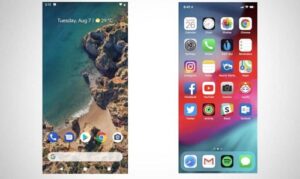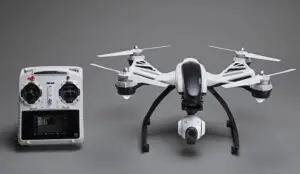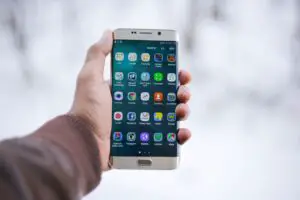Android vs iOS: Which is Better? [Definitive Guide]
If you have already questioned yourself or even entered into a discussion about what are the real differences between the 2 biggest operating systems today: Android and iOS, this article is for you. And to try to select our champion in this category, in this comparison we will evaluate a large number of points individually, analyzing the positive and negative points of each OS in each one.
Leaving aside our personal preferences and doing an impartial analysis, today we will analyze, and once and for all reveal, who is the great champion in the fierce Android or iOS battle.
Which is Better: Android or iOS?
After some months of the official launch of Android 10, 9 Pie, and iOS 12 and other endless testing included, including collected feedback and bug fix updates, the two operating systems are closer than ever to a completely stable version with no major problems.
As both systems have gone through many, many tests focused solely on optimizing resources and performance, we believe that they are on a very similar level and precisely for that reason, they were the selected OS for evaluation, in an attempt to choose the best among these two strong contenders.
Below we will evaluate several topics in order to cover the most relevant portions of these two operating systems, always choosing a winner within each category, in order to make the comparison fairer and without a “middle ground”.
Read Also: Top 5 Best Android PC Emulators
Android vs iOS, Which is Better?
Interface
And as the first parameter of analysis, we will compare the interfaces of the two rivals in general, evaluating issues such as organization, innovation, and design.
Let’s start with Android Pie, which has an interface like the image below.

With a supposed “general redesign” of the interface and applications in general, Android Pie gained a lot in marketing with this, generating many discussions and speculation in forums about what was going to change compared to previous versions.
Starting from your home screen, which basically presents the same structure as the vast majority of previous versions with a touch-up here and there on the icons and small changes on the top bar (where information such as the battery, WiFi signal, and current time are indicated).
The big difference at this point is the introduction of a gesture mode where the traditional 3 buttons on the bottom bar are replaced by a single bar and the functions that these buttons performed are now done with gestures on the screen.
This mode of management was very similar to iOS, which already has such a feature in some versions, and in this regard, it takes advantage of being more improved since it has been tested, improved, and optimized constantly in several past updates.
On the other hand, analyzing the notification tab of the two systems, the one that takes the best is Android, which has had the grouping of notifications for a long time to simplify their viewing, therefore, a good thing for the little green robot too.
Leaving aside the possibility of customizing the icons, Android takes the lead again because it has “more compatible” icons with its current version, maintaining a more pleasant and beautiful pattern to see than the famous rounded squares of iOS that sometimes are not fit in icons like Google Chrome which is a circle.
When it comes to taking advantage of the screen and the layout of the elements in the system, we believe that both Android and iOS offer a good organization and division of their functions, being a difficult task to determine which is the best, since this part is very much in the taste of each one.
Based on our analysis, we opted for the most minimalist system: iOS, which, since it already uses gesture mode and ends up getting ahead in this aspect, manages to optimize its applications more, avoiding the use of buttons and making better use of the useful area. of the screen as a whole.
Winner: iOS
Customization
Honestly, this is an almost unnecessary topic given the gulf of difference between the two systems at this point.
We know that iOS is a system famous for providing a sturdy and stable system but much less customizable, limiting itself to just a few simple changes in font size and overall system design.
Quite the opposite of Android, which has Custom ROMs, launchers, and customizable icons to change your phone to suit your needs and personal tastes, allowing you to change just about everything on the device, from the layout of the home screen, allowing you to add widgets, custom shortcuts and even change the entire interface of your phone.
The fact is that Android is infinitely more customizable than iOS and with that, it carries the gold medal at that point, leaving the opponent literally “in the shoes”.
Winner: Android
Ease of Use and Accessibility
Despite all the customization that Android allows to favor (and a lot) it in terms of accessibility, however, the many versions and variations of it make it end up losing in this regard since these small differences from one version to the another, cause changes in the interface and lose some points in the ease of use in general.
Quite directly, iOS is an operating system that is easier to use, with simplicity as one of its fundamentals, which makes it a system with a relatively short learning curve since its commands are intuitive and easy to learn.
But the main point that determines the winner of this category is the fact that it is uniform (that is, it maintains “almost” the same interfaces) even on other devices such as tablets (iPads) and notebooks (Macbooks).
The Google OS on the other hand has more complete menus, more varied settings being much richer in features, and offers greater customization as we commented on the topic above, however, the cost of all this customization is the ease of use, which ends up impaired due to the many configurations available on the device.
Winner: iOS
Battery Life
When buying a new cell phone, battery life is almost certainly one of the factors you will want to know right away.
This is completely understandable since with each passing day, we want to spend less time charging and more time using our devices.
For many years, Android phones were soaring ahead on this topic making use of “turbochargers” and “wireless chargers”, however with the launch of the iPhone X, this has changed since this model has reached the market compatible with such features as well.
However, even with such a feature included in the Apple ecosystem, its smartphones, in general, have a much lower mAh rate compared to Android phones, which work at higher rates.
To establish our winner in this category, we compared models of the same price range and evaluating their battery life, we came to our conclusion: the Android battery lasts longer in the vast majority of cases.
Winner: Android
Range of Applications
As we like to work with data here, we will evaluate the number of applications that Android and iOS have.
On Google’s PlayStore, according to data from September 2020 provided by the Statista website, Android has 3.4 million applications registered in its store.
The iOS App Store, in January 2020, reached the mark of 1.8 million apps according to Lifewire.
The App Store has a strong tendency to attract apps first when compared to the Play Store due to the higher conversion rates on Apple devices, which is a full plate for developers to port their apps to the Apple store first.
Meanwhile, the Google store provides greater reach for new apps, since the approval process is much faster and ends up bringing more users to new apps.
Although Google is trying to change that, they still approve new apps very easily (compared to the App Store), which ends up causing the store to have many low-quality apps and even some with types of viruses and malware that can damage your cell phones.
As for this problem, the App Store does not end up being left behind, rigorously checking new applications before approving them on their platforms, thus making a higher percentage of apps good and of better quality.
As for this quality, quantity wins, we have our winner already defined.
Winner: iOS
Privacy and Security
Both Android and iOS make use of numerous security measures, aiming to keep your data safe and away from hackers, but despite everything, neither is completely safe.
Regarding both security and privacy (protection of your personal data and documents), the Apple system is our indication, for some reasons that we will quote below.
With so many updates (or updates) that Android receives, there is a much greater chance that one of them will have a breach that can be invaded than in the Apple system, for example, which receives updates less frequently.
Although both systems claim to protect your privacy by not accessing your data, the feeling is that “Google knows things” and that is why we mean that your privacy on Android is most likely “at least slightly breached” And some data is used by Google to improve the system and even to suggest products/services through advertisements for you.
If you value privacy and security above all, choose an iPhone.
Winner: iOS
What is the Best Personal Assistant: Siri or Google Assistant?
Of course, we would not stop talking about the subject of the famous personal assistants that the two operating systems have.
On the one hand, we have Siri from iOS, which despite being a good personal assistant, is still very limited to being a “mere helper”, facilitating and helping you with scheduling dates, reminders, and tasks in the calendar and even interacting with some applications, but nothing too complex to be highlighted.
And like its rival, Google Assistant (as it’s called) has been one of the best and most promising personal assistants of recent times, doing literally everything Siri does and much more, like analyzing your smartphone usage and suggesting recommendations for improving your experience with it. In addition, it is more “humanized”, not giving “so robotic” responses and thus being more versatile and intelligent than its competitor.
Although Siri has taken “a step further” in these latest iOS updates, helping to automate tasks, it still lags far behind Google’s personal assistant, which already has integration with numerous gadgets and applications.
Winner: Android
Updates
The best way to know how the two operating systems perform with their updates is by comparing some (simple) data that the Digital Trends website collected and shared in this article.
Starting with Google SEO, below you can see the version of Android and the percentage of devices that use it around the globe.
- Android 8.1 Oreo: 7.5%
- Android 8.0 Oreo: 14%
- Android 7.1 Nougat: 10.1%
- Android 7.0 Nougat: 18.1%
- Android 6.0 Marshmallow: 21.3%
- Android 5.1 Lollipop: 14.4%
- Android 5.0 Lollipop: 3.5%
- Android 4.4 KitKat: 7.6%
- Older versions: 3.5%
We still don’t know the percentage of people who are using the recently launched Android Pie and Android 10 as it is a new OS that still doesn’t have a lot of market data released.
Now evaluate Apple’s iOS data.
- iOS 12: 78%
- iOS 11: 17%
- Latest Versions (Beta Testers, for example): 5%
The amount of updates is the first point that we notice of the difference between the two systems, which we agree, is absurd.
And the second point is the distribution (percentage) of people in these current versions of the OS.
Given this analysis, it is very clear that if you are looking for an operating system with more “regulated” updates, with fewer bugs and errors and that provides you with the features and functions of the latest updates even with older devices, the right choice for you is iOS.
Winner: iOS
Price
Apple has a lot of recognition and along with that, abusive prices, are extremely high and overvalued.
When it comes to variety, NO operating system can compete with Android.
This is due to the fact that we find thousands of variations of Android, with the most different configurations and price ranges, pleasing most users with more reasonable and affordable prices in general, and doing very well with an excellent cost-benefit ratio.
Winner: Android
Final Verdict: iOS or Android, Which is Better?
And as for our final verdict, we came to some interesting and specific conclusions that define which is the best cell phone operating system for you given its use.
If your use is to use and test more applications, no matter if some of them may fail in terms of optimization, go with Android since it usually has a more complete store and is full of applications.
If you have other iOS devices like the Macbook or iPad, go with iOS because it allows for excellent compatibility between all your devices.
If privacy and security, both of your data and against malware are extremely relevant points for you, go with iOS for your greater security against such attacks since the AppStore applications are more optimized in general.
EXTRA: If you are a programmer or developer, you may be wondering if investing in apps for iOS or Android is more worthwhile and the answer for you is simple.
If you want more conversion per user, go with iOS.
If you want to reach more audiences (more people using your app), choose Android.
There is no denying that both operating systems have their strengths and weaknesses and this creates a very great rivalry between them, generating many, many discussions in forums, blog comments, and videos on Youtube, in the incessant and unreachable attempt to find out at last, which is better: iOS or Android.
As we covered many topics here in our article, we believe that in general, the winner is iOS for (simply) scoring more points than its opponent according to our analyzes, but in no way does it undermine one or the other system and we believe that everyone should accept the differences and enjoy the best of both sides, avoiding haters, fights and unnecessary discussions about it.
Now We Want To Hear From You
And now tell us, what did you think of our analysis? Do you have any suggestions as to what should be included in our analysis or revised to ensure a “fairer battle”?
We hope you enjoyed the article.
A hug and see you next!



